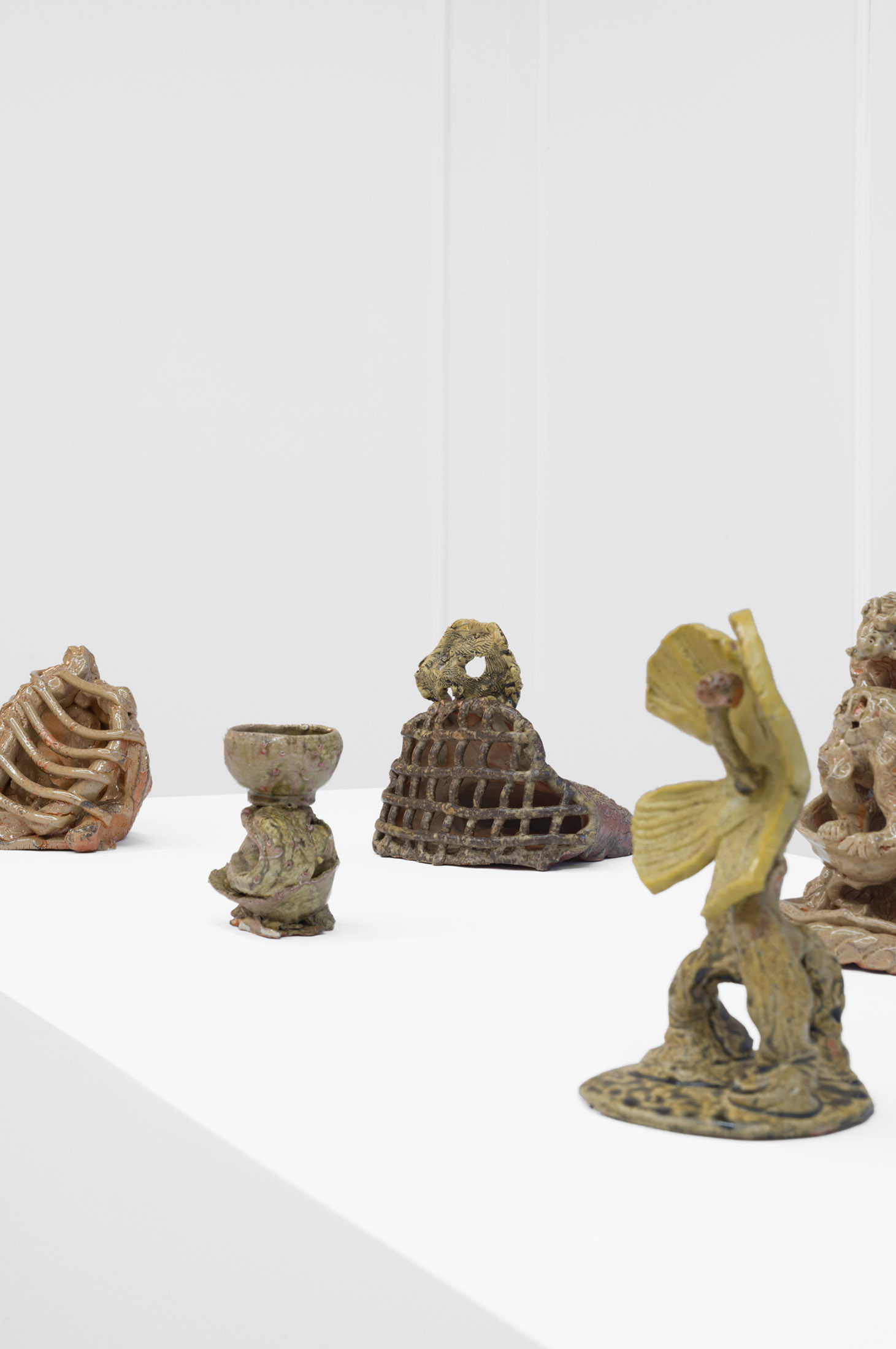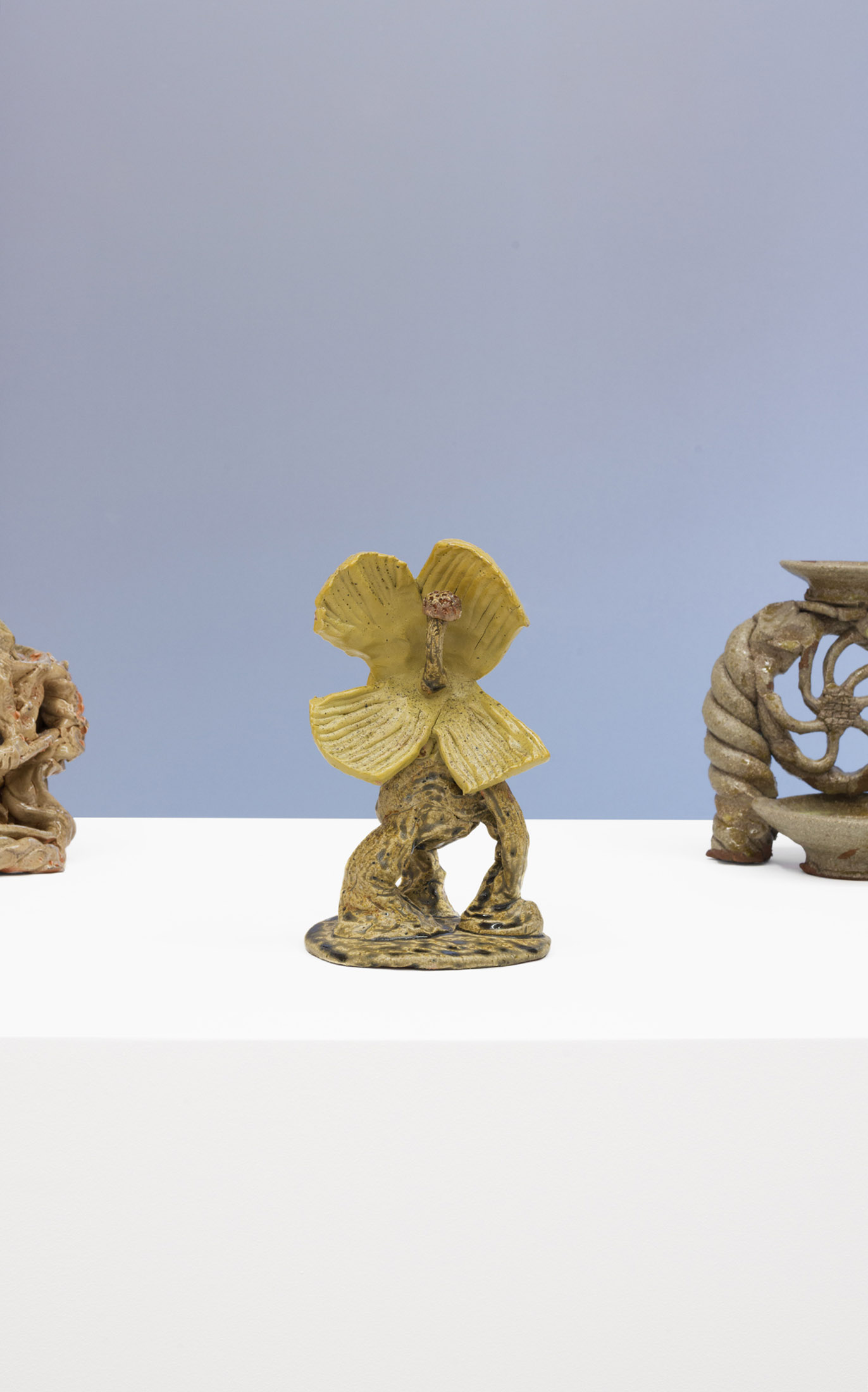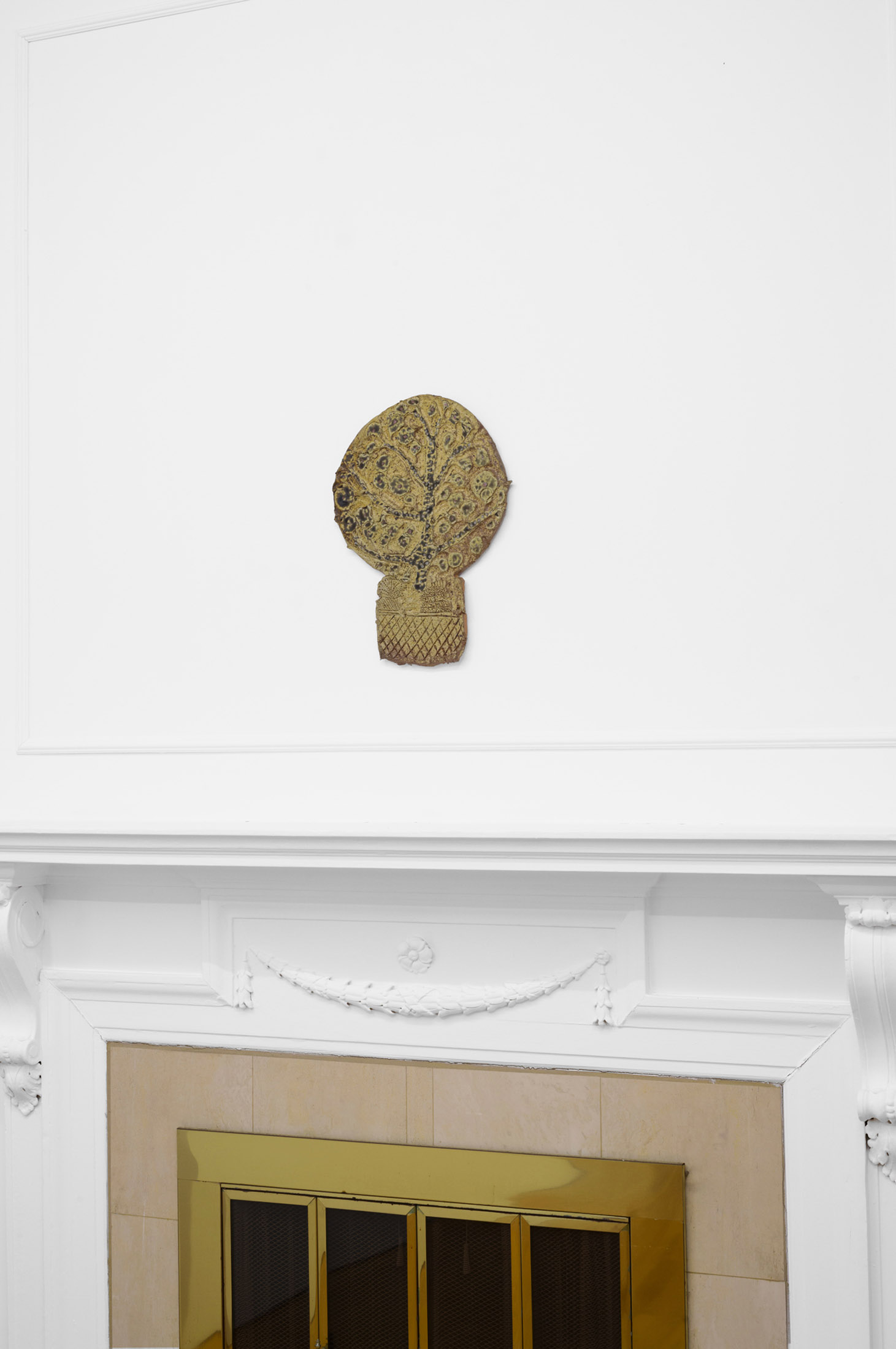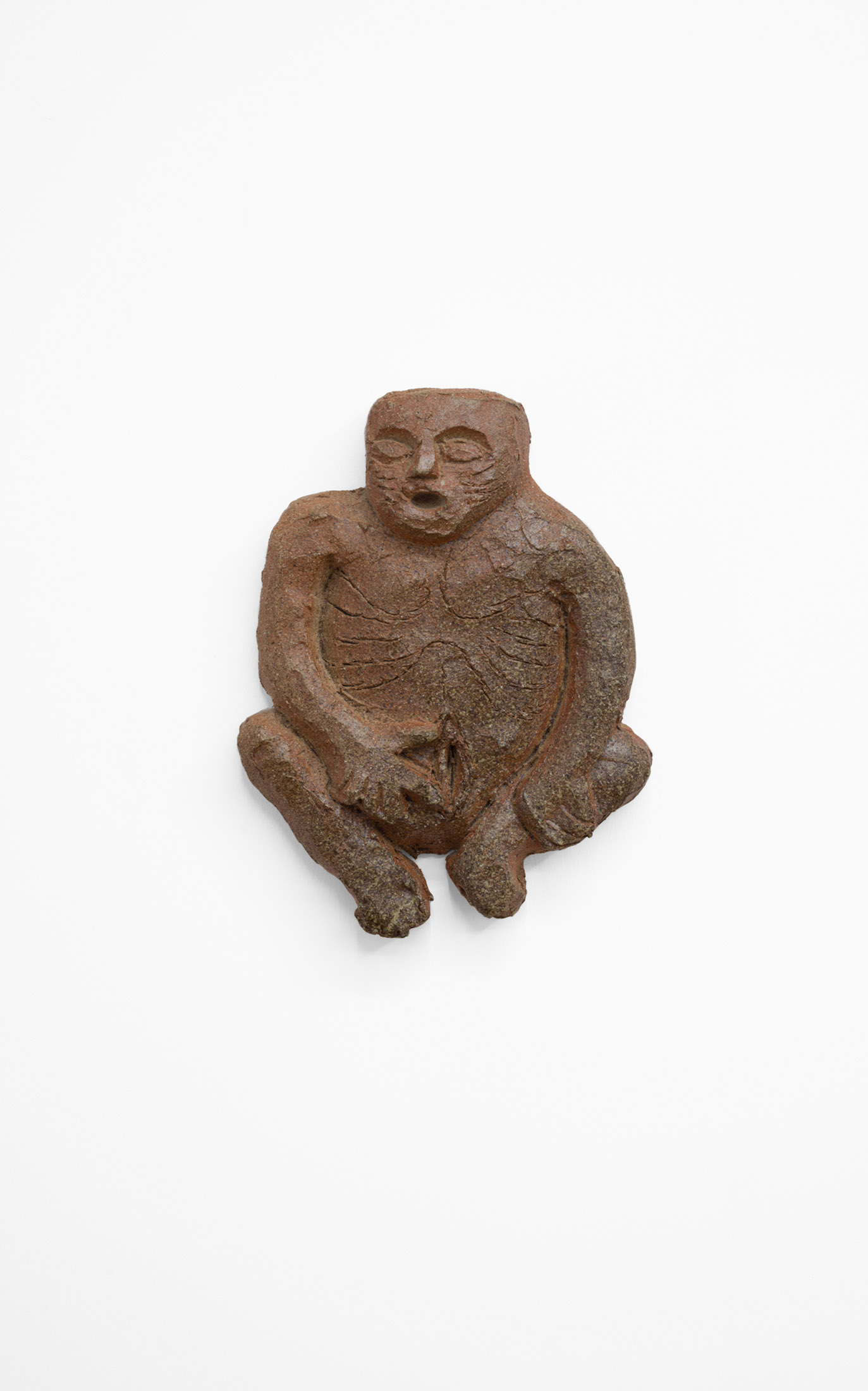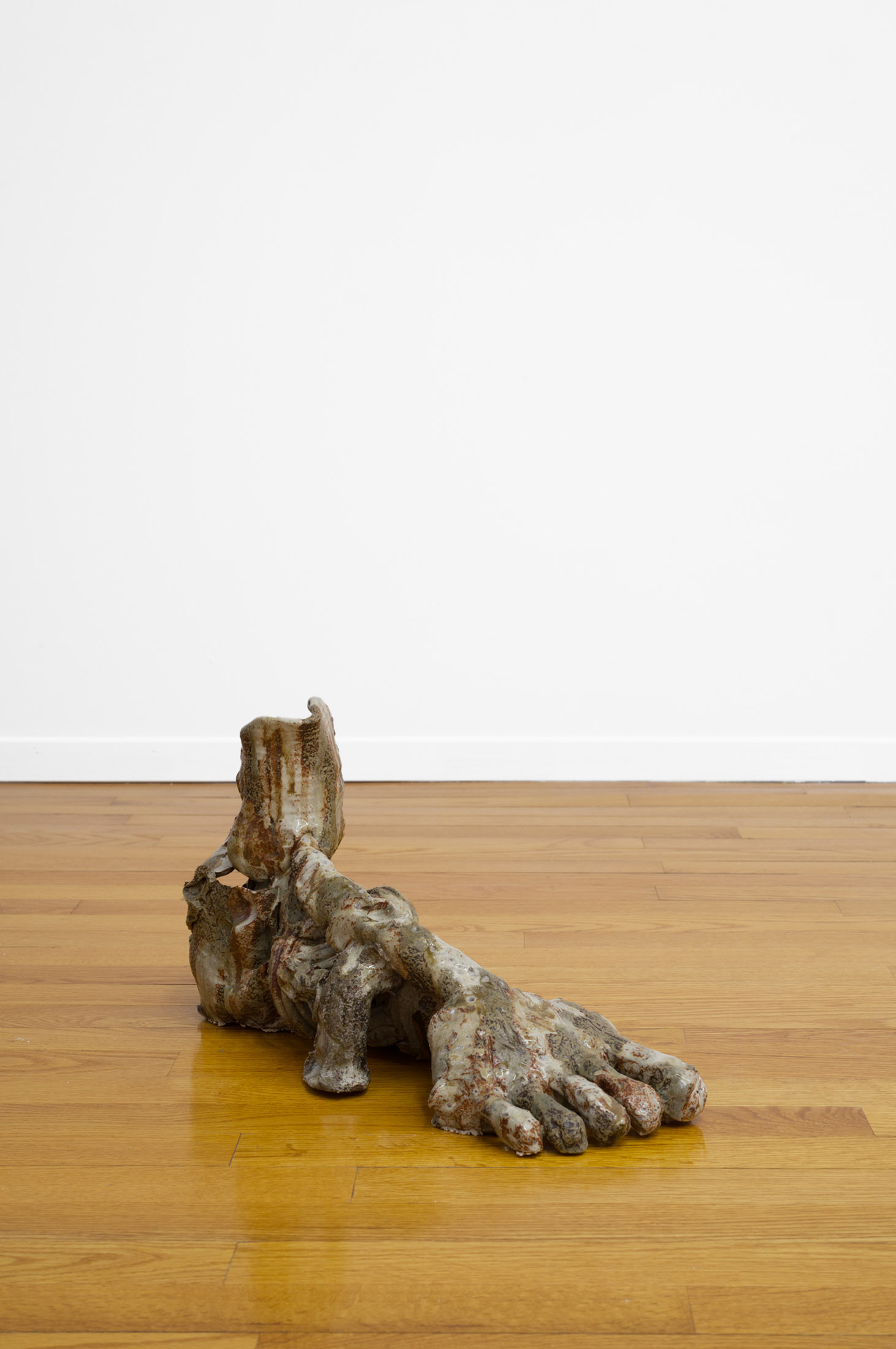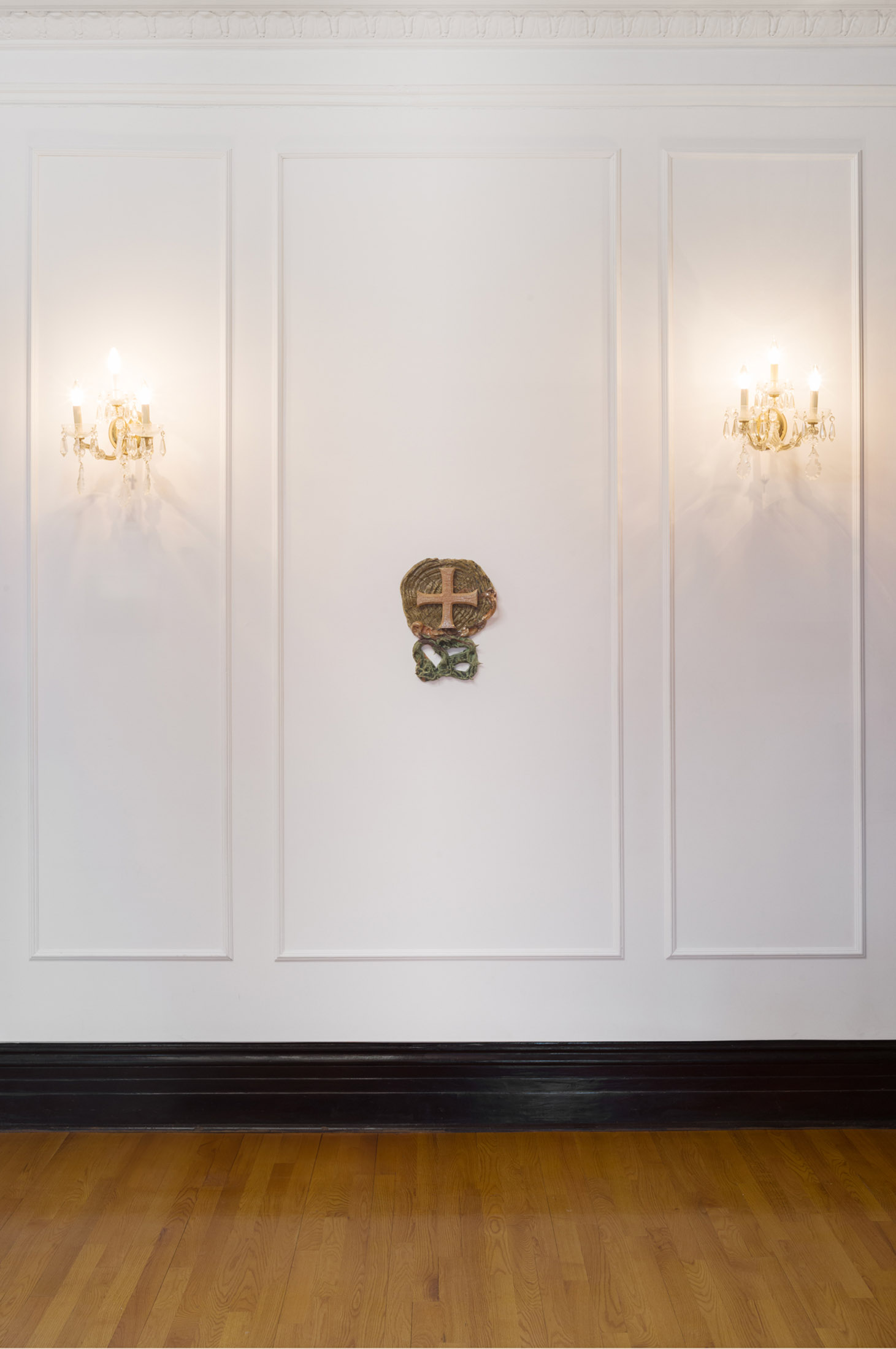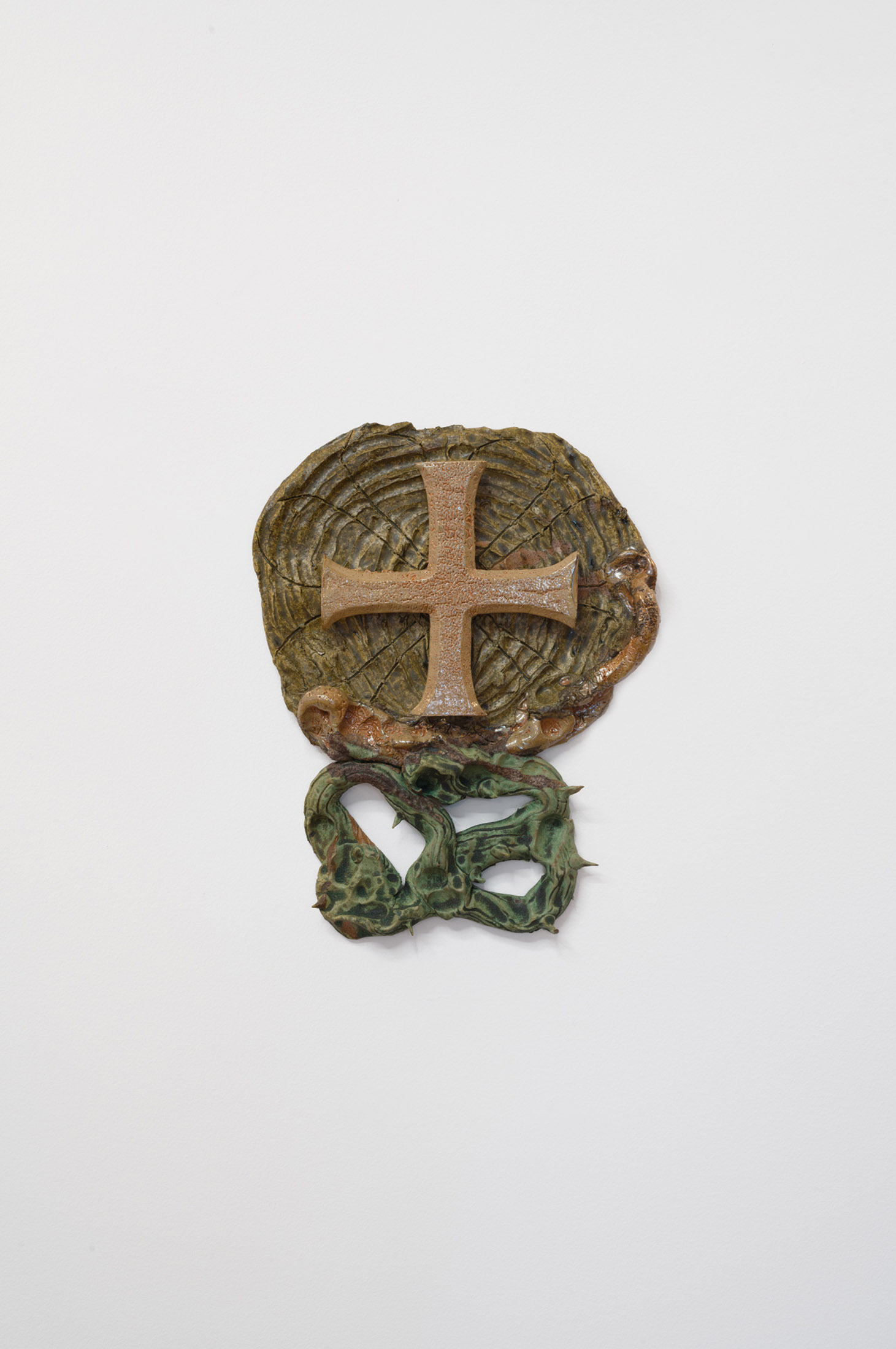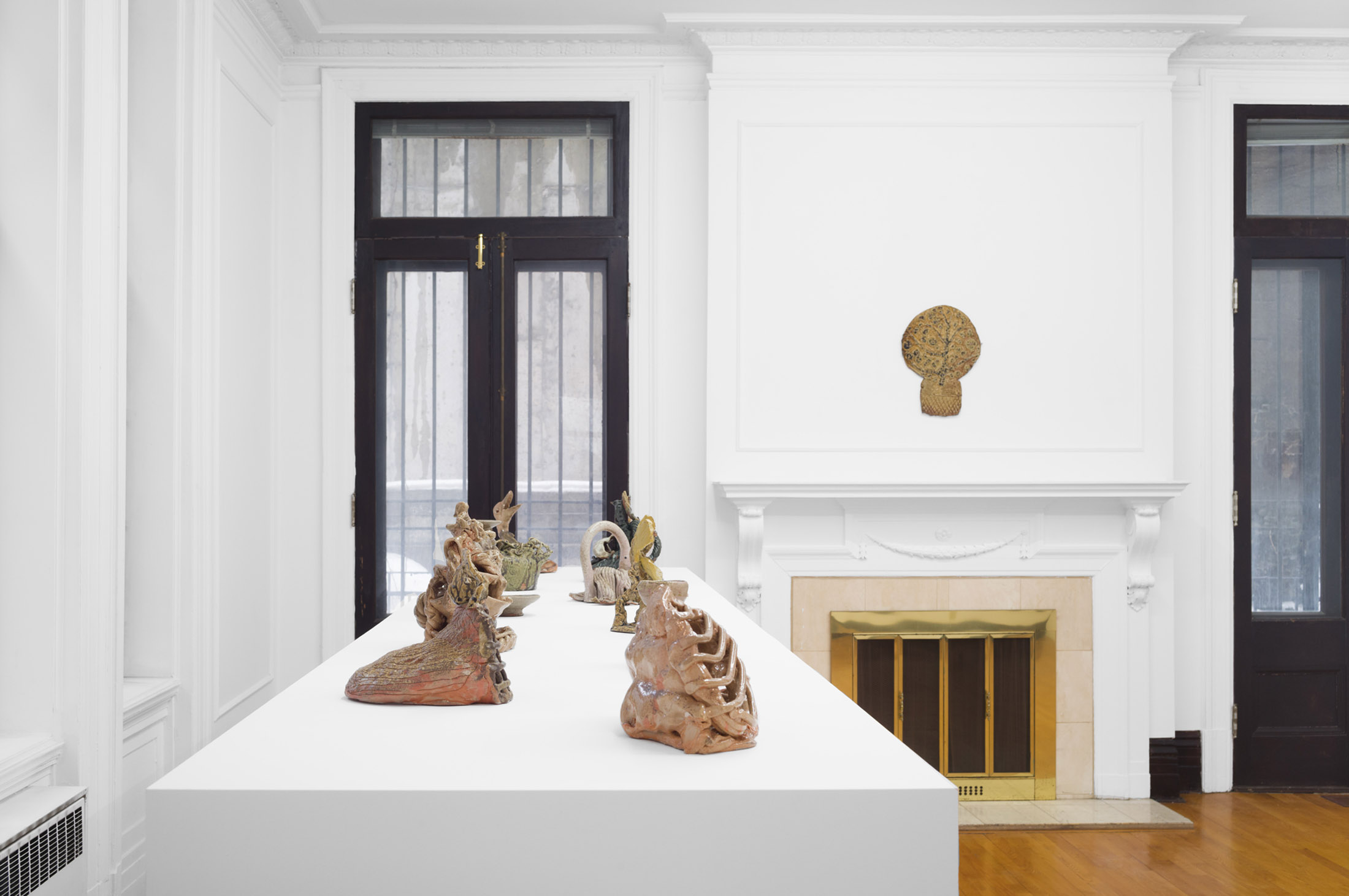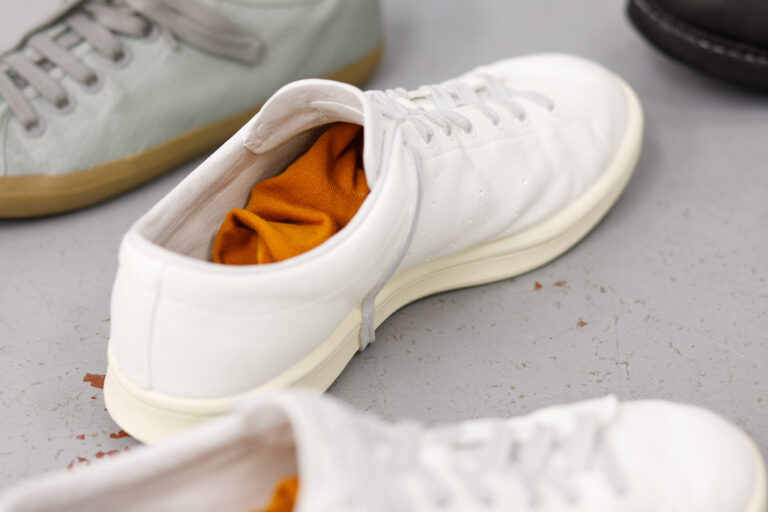Artist: Trevor Baird
Exhibition title: Sunkissed
Venue: Pangée, Montreal, Canada
Date: January 20 – March 2, 2024
Photography: all images copyright and courtesy of the artist and Pangée, Montreal
The ceramics of Trevor Baird feel archaic. Tarnished, at times seeming to have surrendered to erosion, or to the slow creep of lichen, they bear ciphers of antiquity, teasing the viewer into speculation. Have I been newly created, they ask, or have I been found?
And they should feel ancient—what is older than earth itself? What infant isn’t the sum of those who came before it? Through his latest collection, Sunkissed, Baird harmonizes the relationship between matter, psyche, spirit, and self. His process is essentially prehistoric, eschewing the charm and ease of contemporary technology. He instead strips the art to its marrow to harness its most primitive, natural components. In tones of olive, russet, and umber, the entirely wood-fired ceramic works gleam modestly with the same sheen the sun paints our summer arms, legs, and foreheads. To be kissed by the sun, or by fire, is to be transformed. Wood splits and hisses as it writhes into glowing scarlet embers, diminishing to porous black carbon and feathery ash; clay and feldpsar are hardened and fortified, hot and glossy. These elements don’t disappear, they simply change form—a transmutation. For as much as he is an artist, the ceramicist is by nature a steward of alchemy. His task is to give birth to what already exists—ancient matter, yes, but also himself and his viewer—as something altogether new.
These works are fundamentally unconcerned with how clay can assimilate into the palatable, synthetic, unblemished aesthetic facade of modernity. Instead, they champion the dichotomous nature of the soul, implementing collective and at times unconscious alchemical symbols: a swan penetrating the negative yonic space between its wings with its own phallic neck; the bodhi tree; materia prima; the meandering path of Jungian dream analysis, alluding to the process of individuation. Mircea Eliade’s “The Forge and the Crucible” argues that through projection, elements of the self are found in raw materials, confirming that these works equally suggest how the self is realized through intimate collaboration with the natural world. In this way, they exist as spiritual artifacts.
In Genesis, God puts Adam to sleep, opens his side and pulls out a rib. From this, comes Eve, and from Eve came forth every man. Woman as God, her womb a vessel. Understanding ceramics and the manipulation of raw materials as obstetrics-coded, Baird, too—mother, anima, or God—opens the fire and pulls out ribs. A recurring motif throughout Sunkissed, ribs are the artist’s interpretation of the alchemical concept of the vessel as the symbol for the soul. An homage to our internal scaffolding, the curved spindles of our bones housing the soft piles of our organs and their processes—a vacuum, almost, within which the agenda is digestive and cardiovascular, as much as it is concerned with processing ailments of the psyche—we are physical and spiritual containers. Baird hones the ribs in Animus Mondi, or “a chest for the world” in their anatomical cage form, a reminder of the contained, or imprisoned self. It’s impossible not to notice the negative space within them where a heart might be. With a near-self awareness of their captivity on the material plane, the works beckon the viewer to fill in the blanks: “who looks outside, dreams; who looks inside, awakes.”
-Text by Rebecca Storm



